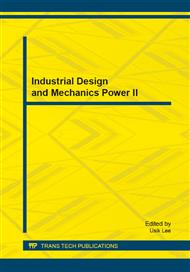p.568
p.572
p.577
p.582
p.586
p.590
p.597
p.605
p.610
Milling Stability Lobe Diagram Construction on FV520B Stainless Steel and Experimental Testing Investigation
Abstract:
This paper investigates the zero-order analytical method to construct milling stability lobe diagram to improve the impeller milling efficiency. It is used to determine FV520B material milling parameters optimization. This method can select the appropriate number of revolutions and the cutting depth processing avoiding chatter occurrence. It can keep the required accuracy and surface quality for the workpiece. At the same time, it improves the safety of the tool and machine reliability. Through experiments data analysis, parameters constructing lobe diagram can be obtained. Different testing points in the constructed lobes are used to verify the correctness of the method. The results show that this method has great significance in the actual impellers manufacturing process.
Info:
Periodical:
Pages:
586-589
Citation:
Online since:
October 2013
Authors:
Keywords:
Price:
Сopyright:
© 2013 Trans Tech Publications Ltd. All Rights Reserved
Share:
Citation:


